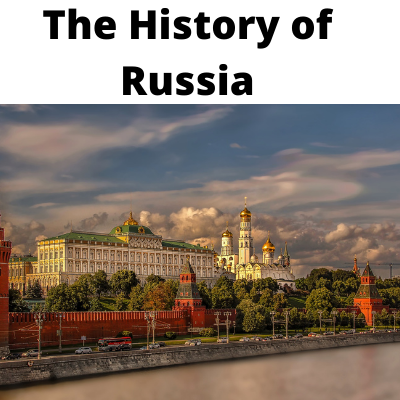The
History of Russia
Russian history begins with the activities of the East Slavs. [2] The main common date for clear Russian history is the fortification of the Russ area north of 862, which was blocked by the Varangians. [3] Staraya Ladoga and Novgorod have become large urban communities with another unusual organization from Scandinavia and the Slavs and Finns. In 882 Prince Oleg of Novgorod attached Kyiv, after which he joined the northern and southern fragments of the Eastern Slavs under one domain. The empire retained Christianity from the Byzantine Empire in 988, and it began to blend in with Byzantine and Slavic social laws, which were similar to Russian customs for the next thousand years. Kievan Russ finally came in because of the Mongol invasion in 1237-1240 and the massacre.
After the thirteenth century, Moscow became a place of political and social persecution. Moscow has become an important center of Russian integration. Before the end of the fifteenth century, Moscow joined the northeast and northwestern states of Russia, in 1480 finally ending the Mongols. The Grand Duchy of Moscow became the Stardom of Russia in 1547. In 1721, Emperor Peter the Great renamed his country the Russian Empire, trying to connect us with the realities and realities of modern Russia - not at all. . Programs focused on Western Europe. Flow conditions extend from the eastern lines of the Polish-Lithuanian Commonwealth to the Pacific Ocean. Russia became an amazing power and ruled Europe after defeating Napoleon. The workers' uprising was normal, and everything was stopped for fear. Emperor Alexander II overthrew the Russian Empire in 1861, but the flight of experts was lost, and pressures began to mount. Long after that, attempts to change, for example, the Stolypin riots of 1906-1914, the 1906 constitution, and the Dumas Empire (1906-1917) tried to open and change the economy and political structure, yet the king. I would not. Stop fascism and go against the sharing of his power.
The combination of crumbling finances, the exhaustion of war, and the frustration of a vicious system put the 1917 Russian Revolution in high gear. Power with the help of the Bolshevik government on 25 October 1917 (New Style 7 November). In 1922, Soviet Russia, along with Soviet Ukraine, Soviet Belarus, and the Transcaucasia SFSR ratified the Treaty of USSR, authorizing the unification of four republics to organize the Soviet Union as a country. Somewhere around 1922 and 1991 Russian history became the epitome of Soviet history, a country considering the way of thinking that was often associated with the Russian Empire before the 1918 Brest-Litovsk Treaty. From its earliest years, civil authority in the Soviet Union - joined in line with the standard of a single Communist party, as the Bolsheviks call it, since March 1918. The most effective way to manage social construction, no matter what. , changed at different times in Soviet history: from the wider economy and various social laws and societies of the 1920s through the application economy and the borders of Joseph Stalin a good opportunity for the "standing period" from the 1960s to the 1980s. At that time, the Soviet Union was one of the victors in World War II after recovering from a surprise attack in 1941 by its now prominent ally, Nazi Germany. It turned into a major force against the new powers in the United States and other Western countries through the Cold War. The USSR had a massive biodiversity product with its space program, sending a massive counterfeit satellite and a major man in space.
During the 1980s, as Soviet and political tensions escalated, Mikhail Gorbachev left behind a radical change, in the long run prompting the deficiency of Communist association and the separation of the USSR, which put Russia in control of the empire. History of post-Soviet Russia. The Russian Soviet Federative Socialist Republic renamed itself the Russian Federation and became one of the few separate regions that replaced the Soviet Union. [4] The Russian Federation was the main post-Soviet republic that fully anticipated the registration of the USSR with the UN Security Council. [5] Later, Russia acquired a total of nuclear weapons in the Soviet Union in 1994, which was later announced in Budapest's Memorandum. Russia has seized a variety of nuclear weapons, but it has lost much of its power. To drive away from the organized socialist system and state responsibility during the socialist era, the new trailblazers, led by President Vladimir Putin (former President in 2000), clung to political and financial power after 2000 and adopted a global self-declaration system. Combined with currency fluctuations, Russia has since regained control of the world as a politically attractive country. Russia's 2014 addition to the Crimean Peninsula introduced financial sanctions imposed by the United States and the European Union. Under Putin's organization, Russia's stigma was rampant in Europe, and Russia's independence was widely criticized by international observers.











0 Comments
If you have any issues please let me know...